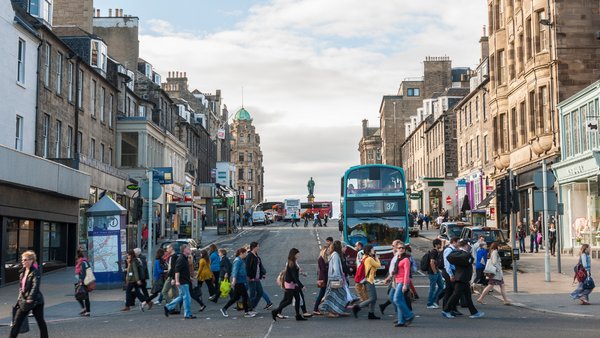Can heritage help close the identity gap at the centre of place shaping?
Over the next two days I am chairing a conference hosted by the Heritage Lottery Fund. I will also be telling the conference about the findings of a small RSA project exploring heritage and its role in local strategic decision making.
It is seven years since Sir Michael Lyons used the phrase 'place shaping' as the central concept of his Government sponsored report on the future of local government. Now, a variety of factors, including austerity and some aspects of greater devolution to cities and city regions (with more promised by all parties), has made this concept dominant. Local leaders are recognising ever more explicitly that unless they can turn their localities into places that are economically dynamic and social engaged, the gap between needs and resources will become an unbridgeable chasm.
Looking at these issues from the perspective of the heritage sector it is auspicious that the first item in Lyons' list of priorities for modern councils was 'building and shaping identity'. Heritage is, of course, a central component of identity.
This would lead one to imagine that councils and other public agencies in the business of place shaping would see heritage as a set of assets of great significance. Based on field work by the excellent Clare Devaney, we explored this assumption through 'deep dive' research in three cities: Stoke on Trent, Manchester and Plymouth.
Heritage certainly matters to local leaders and other civic figures. Many talked passionately about local history both tangibly preserved in buildings and spaces and less tangibly in traditions and social mores.
However, the enthusiasm is much less evident in local strategic policy making. There is an inconsistent and incomplete view of what heritage assets comprise and it often isn’t clear where lead local responsibility for the sector lies (something which will have been exacerbated by the massive reduction in the number of conservation officers employed by councils). Conversely, the local heritage sector itself generally lacks cohesion and leadership, something which contributes to its low profile in strategic forums.
More significantly, the influence of heritage in the definition of place was not consistent. This is bad news for a sector which has already been badly hit by local austerity measures. But it also throws into doubt the whole place shaping project.
It is hard to appreciate local identity without appreciating local history. Yet, without a compelling view of identity referencing the relationship in citizen's minds between past, present and possible future, how can place be understood let alone shaped? To put it more simply there seems to be an identity gap at the heart of place shaping, one which could in part be filled by an appreciation of heritage as a tangible and intangible asset.
Place shaping involves identifying a place’s distinctive qualities and associations and deciding which of these to emphasise and seek to enhance. It involves mobilising local stakeholders behind an inspiring vision for their place. And it should involve engaging citizens themselves in identifying what they value about where they live and what they want to preserve even as the pace of change accelerates. Sometimes places bring the past into the future in ways which are thoughtful, specific and powerful, other times it is so superficial to be risible; one place we visited had a list of ‘fifty heritage high points’ which included the fact that the Beatles twice played a concert in the city!
Much of this is politically charged. The local public debate is often poised between two contrasting dynamics; on the one hand a sense of loss and often resentment in the face of change and particularly immigration and diversity (captured in the phrases like ‘there’s been a lot of change round here’ or ‘thing’s aren’t like they used to be’). On the other hand, it seems that people arriving new in places have a strong appetite to feel quickly part of their new community and to find routes for engagement.
Our report is in part a critique of the often thin and ahistorical way that place is conceptualised and applied in local strategy, but it is also a challenge to the heritage sector. Locally, organisations need to work better together showing they can recognise the need for hard choices and can bring something of value to conversations that go much wider than their sector. Nationally, peak heritage organisations – like the HLF – could play an important role in exploring the relationship between place shaping and heritage, and identify examples from the UK and around the world of where engaging the heritage sector and thinking more deeply and bravely about the relationship between past, people and progress has contributed to successful local economic and social strategy.
A few years ago it was often assumed that the growing mobility of information, population and capital would make place a less significant factor in our lives. This assumption has been belied by a growing focus on cities, their different performances and potential trajectories, and an emphasis on the local in patterns of engagement, innovation and consumption.
If, when it comes to social and economic policy, ‘place is the place’, this is a huge opportunity for heritage to move from the periphery to the centre of local strategic policy making. The question is whether the sector can raise its sights from the day to day grind of protecting old stuff and fighting for grants to take advantage of this opportunity.
Related articles
-
How can we cultivate healthier and happier communities?
Ella Firebrace Riley Thorold
How might we look to our futures and shape what it means to lead healthier and happier lives?
-
Supporting our communities: Time to move from false competition to needs-based investment
Ian Burbidge
Ian Burbidge on the importance of learning from previous area-based funding initiatives to address inequality across the UK.
-
The levelling up conundrum
Al Mathers Anthony Painter
How can the government tackle the UK's chronic and enduring regional inequalities? We explore three plausible areas of focus for levelling up: economic development, social cohesion, and community power and identity.




Be the first to write a comment
Comments
Please login to post a comment or reply
Don't have an account? Click here to register.